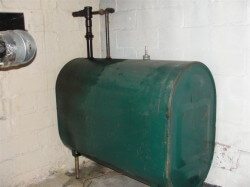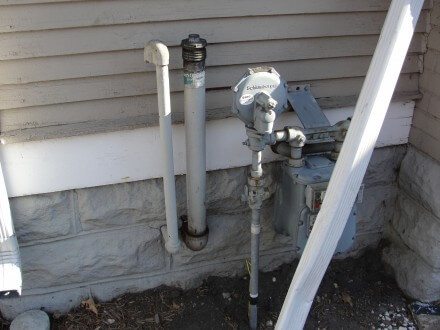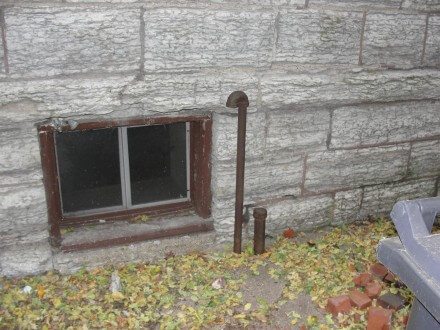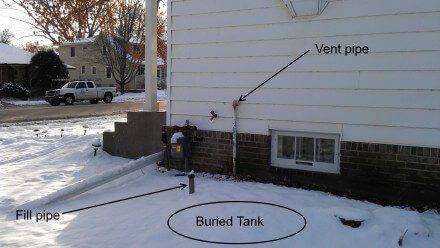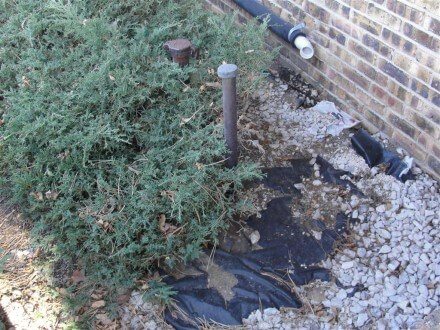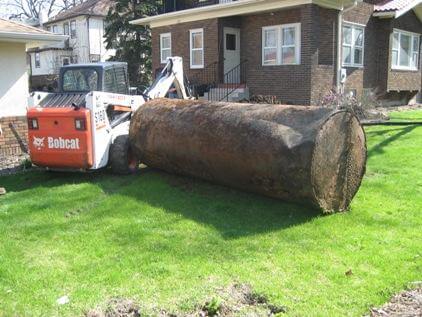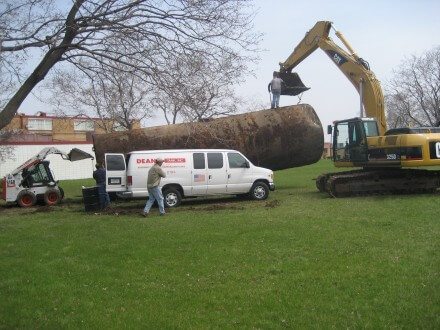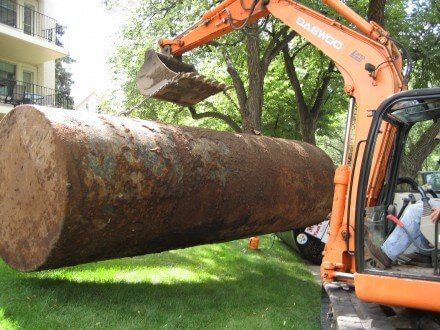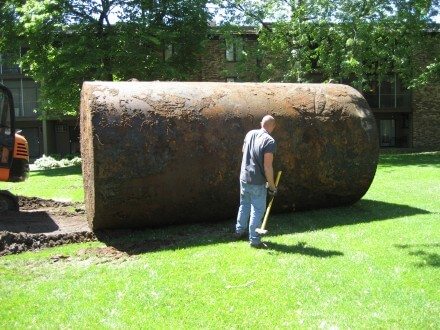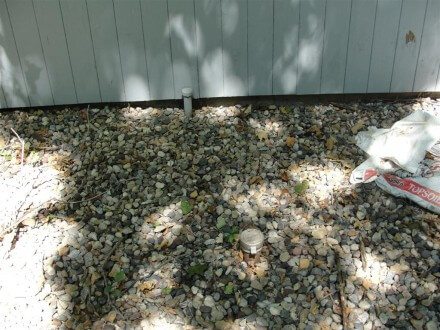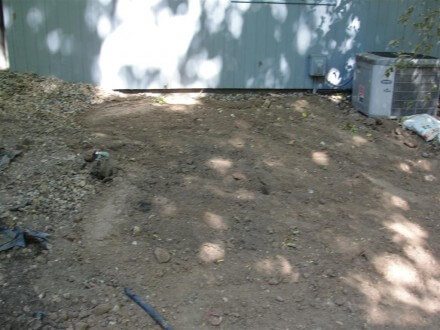If you're buying an old house in the Twin Cities with pipes sticking out of the ground in your yard, heads up. You might have an oil tank somewhere at the property. While the vast majority of homes in the Twin Cities are heated with natural gas, there is still a small percentage of homes in the metro area that are heated with fuel oil, and far more houses with abandoned oil tanks.
When a home gets converted from fuel oil to natural gas, the fuel oil tank becomes abandoned. Once the tank is abandoned, it needs to be dealt with.
When tanks are abandoned
If the tank is buried, it needs to be removed or filled in place If a fuel oil tank is left buried, it could eventually leak. A leaking underground storage tank (LUST) can contaminate the soil as well as the home, creating an environmental hazard that can cost a ridiculous amount of money to clean up. You can visit the EPA's web site on LUSTs for more info.
When a tank is located inside the house but not buried, it needs to be properly disconnected, and sometimes removed. A fuel oil tank takes up a large amount of room, so most people choose to have them removed, but requirements vary from city to city. For example, once a fuel oil tank is abandoned in Minneapolis, it needs to be removed from the property. This is written in to their Truth-In-Sale of Housing Evaluator Guidelines under item #25. The guidelines state:
The evaluator shall determine if there are any abandoned fuel oil tanks. If found, mark as RRP or RRE. A licensed contractor must properly remove them. (A permit is not needed if the tank is less than 200 gallons.). (Per Uniform Fire Code Sec. 79 and Mpls. Code 48.145)
Another option for an abandoned fuel oil tank is to stick it out in your front yard and paint it like a cow. You might think I'm kidding, but I've seen it done more than once.
Clues to a buried fuel oil tank
The easiest way to identify a potential buried fuel oil tank is to look for a fill pipe and vent pipe at the exterior of the home. Sometimes the pipes will go through the foundation wall of the home.
Sometimes they just go down in to the ground.
When fuel oil tanks are removed, the fill and vent pipes need to be removed or cut off and filled with concrete. If you find pipes sticking out of the ground or foundation wall like the ones shown above, it probably means one of two things: either the tank is still there, or it was removed by a hack. No professional oil tank removal contractor is going to leave the vent and fill pipes looking like that.
According to Dean Nething of Dean's Tanks, there were many 'erroneous deliveries' that happened during the 60's and 70's, where one house address got confused with another. About once a year, a basement would get contaminated with hundreds of gallons of fuel oil. In every one of these cases, the contamination was so bad that the fuel oil company, Standard Oil, had to buy the property so they could tear it down and dig out the basement. This is why the fill pipes always need to be removed when the tank is removed.
When the pipes are right next to each other like in the photos above, there's a good chance that the fuel oil tank is (or was) located inside the house or under the house. When the pipes are separated from each other, there's a very good possibility that there's a buried fuel oil tank in the yard. The photo below came from a house in Minneapolis – these pipes led to a 1,000 gallon tank buried in the yard.
Here's another example – the fill and vent pipes were located in the front yard behind some bushes at a home in Edina. These innocuous, nearly hidden pipes led to an enormous buried tank in the front yard.
There are a few diagrams floating around online that show an indoor style of tank buried in the ground, like the big green one that I showed at the beginning of this post. Those indoor style of tanks are extremely unusual to find buried – or according to Dean's Tank, "once in a blue moon". The vast majority of buried tanks look a lot more like big drums, like the ones shown below. These photos are courtesy of Dean's Tank.
Here's another example of pipes sticking out of the ground leading to a buried oil tank in the yard. In this particular case, the fill pipe had a cap that could be opened. I stuck my tape measure down the pipe, and it came out soaked in fuel oil. It smelled like fuel oil for the next two weeks, despite my half-hearted efforts to clean it off. Fuel oil has a strong odor, and takes a long time to go away. It's easy to understand how a leaking tank can create such a nasty problem.
The person buying this home had the sellers remove the tank; here's what the site looked like after the tank was removed.
What to do if you suspect a buried oil tank
If you suspect a buried oil tank, call Dean's Tank, Inc. They've been specializing in fuel oil tank removal / abandonment in the Twin Cities for over 25 years. If a fuel oil tank has been professionally removed from a property, there's a good chance that this was the company that did it. To determine if a fuel oil tank is present, they'll come out and do a site inspection for $200.
Dean estimates his company has removed between ten and twenty thousand tanks. The cost of removing a buried fuel oil tank varies greatly from property to property, but costs will typically range from $2,000 to $3,000. Having a tank filled in place typically costs just a little bit less.
According to Dean and Minnesota Real Estate Attorney John Braun, some homeowners may qualify for free oil tank removal by the Minnesota Pollution Control Agency, but certain conditions apply. You can read more about this program in the first link included at the end of this post under 'Useful Links'.
Buried Fuel Oil Tanks and Home Inspection Standards
Home Inspection Standards of Practice specifically state that buried fuel oil tanks are not something that home inspectors are required to inspect. Here's some SOP language from different home inspection organizations:
- ASHI: Inspectors are NOT required to inspect: underground items including, but not limited to underground storage tanks or other underground indications of their presence, whether abandoned or active.
- NAHI: The inspector is not required to record location of any on-site visible fuel tanks within or directly adjacent to the structure.
- InterNACHI: The inspector is not required to inspect fuel tanks or underground or concealed fuel supply systems.

